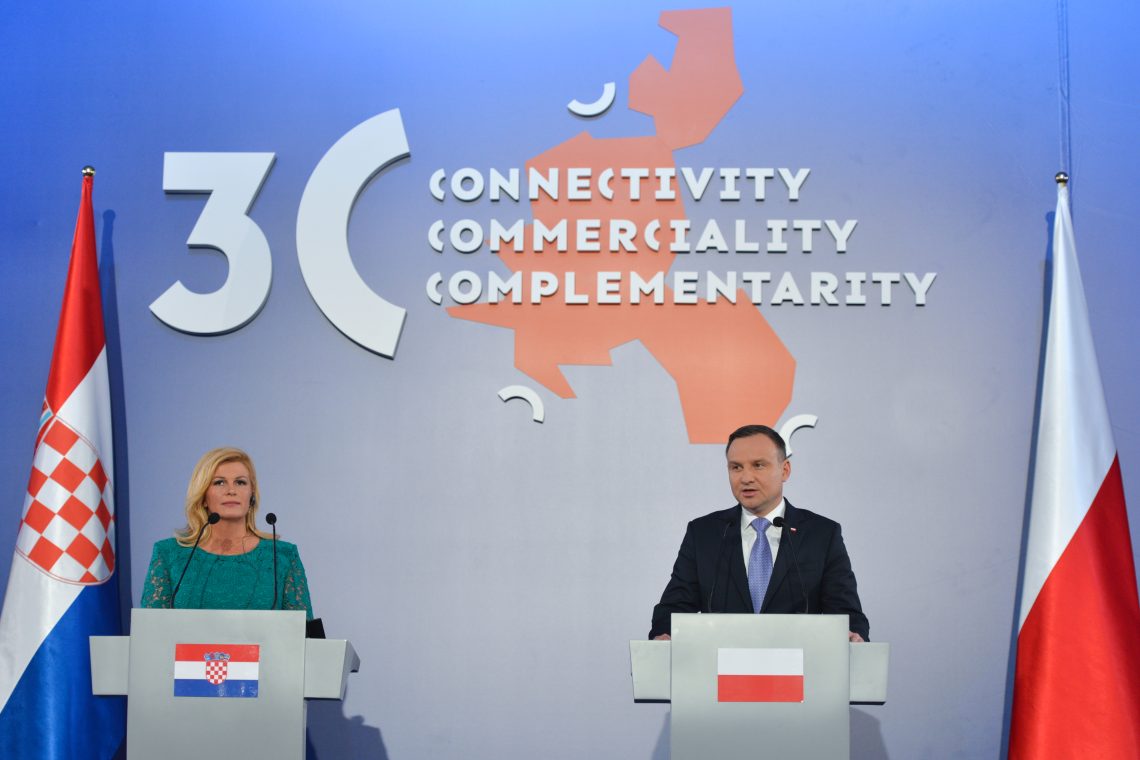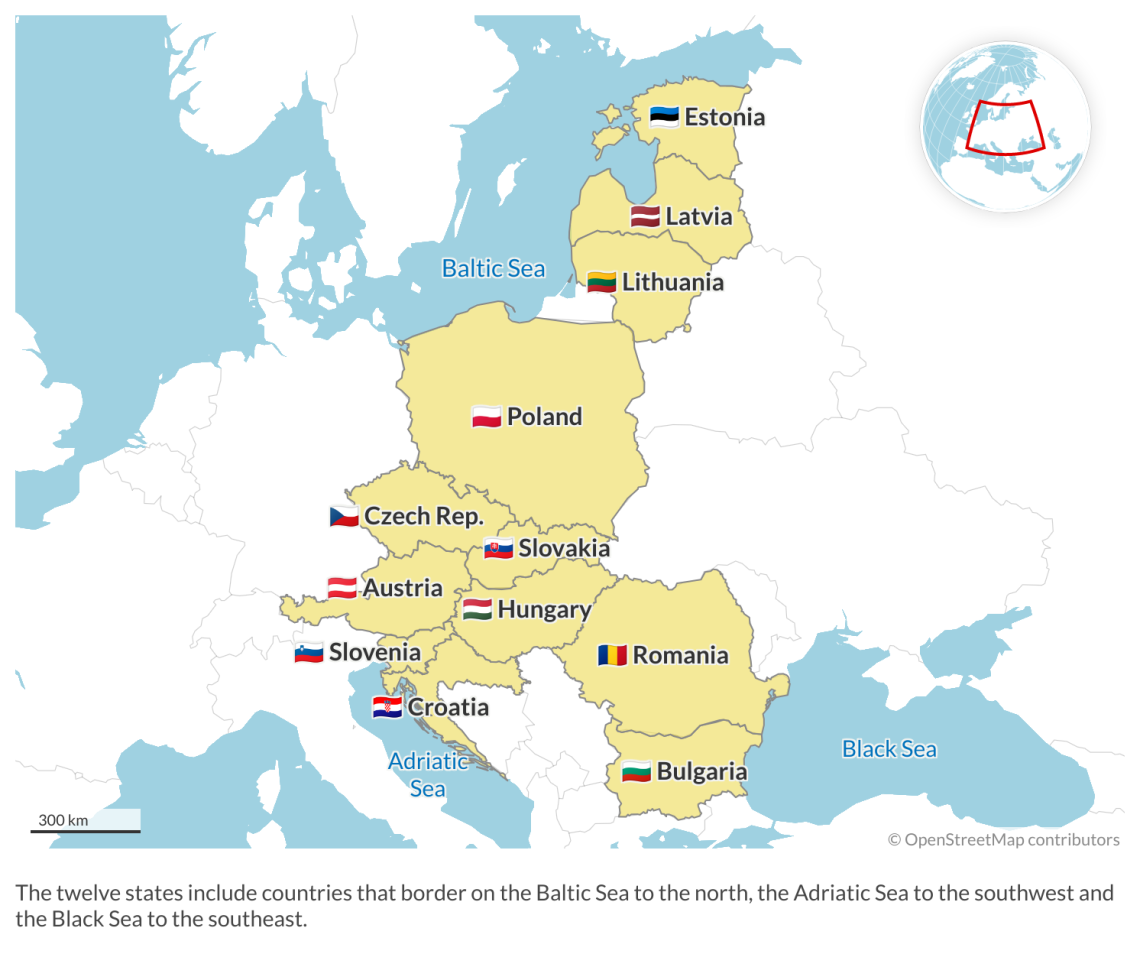The untapped potential of the Three Seas Initiative
Central Europe’s Three Seas Initiative could develop into a viable alliance, but only with support from Washington, Berlin and Brussels.

In a nutshell
- The Three Seas Initiative has only progressed modestly
- U.S. support has been inconsistent
- Diverging priorities have hindered integration
The Three Seas Initiative (3SI) was launched in 2015 as a joint Central European project. Its goal was to create a regional development initiative that would operate on commercial terms and redress the region’s chronic infrastructure shortcomings.
This year’s annual summit was held in Riga, Latvia. The meeting demonstrated that the project continues to develop, with potential for transatlantic economic, energy and security issues. Yet its progress has been modest, reflecting many of the crosscutting challenges in the region and a lackluster commitment from the United States. While the initiative remains alive and well, there are few expectations that it will realize its full potential in the near term.
From concept to construction
The focus of the initiative (which includes Austria, Bulgaria, Croatia, the Czech Republic, Estonia, Hungary, Latvia, Lithuania, Poland, Romania, Slovakia and Slovenia) is on digital, physical and energy infrastructure that would enhance regional economic integration, productivity and resilience. Although the project includes investments from member states as well as partner nations and the European Union, the fund is intended to attract large private sector funding and become commercially viable, with emphasis on transparency and professional managerial practices.
Central Europe needs powerful strategic partners to jump-start its initiative.
From the outset, the project drew the attention of the transatlantic community. In addition to promising to enhance the economic development of the region and north-south energy and transportation networks and supply chains, though unstated, the initiative had strategic implications. The 3SI offers the U.S. and Europe an alternative engagement model to the Chinese Belt and Road Initiative in Central Europe and Beijing’s 17+1 cooperative development framework. The 3SI could potentially address energy security and dependence on Russian gas and oil as well as strengthen dual-use infrastructure for the forward collective defense of NATO.
In addition to the annual summits, the 3SI established a chambers of commerce business forum, an oversight structure and a development fund.
Challenges and changes
From the outset, differing perspectives and regional politics hindered the rapid adoption of the project. Although collectively the nations of Central Europe represent a significant market and workforce, the countries there differ greatly when it comes to size, needs and priorities. Poland introduced the initiative, but this has raised concerns among smaller Central European nations and Germany that the project would be dominated by Central Europe’s largest country.
The initiative drew the attention of President Donald Trump’s administration. At the 2020 summit in Tallinn, Estonia, U.S. Secretary of State Mike Pompeo declared Washington would make a $1 billion commitment to the 3SI fund. This would be disbursed through the U.S. International Development Finance Cooperation (DFC). The U.S. also sent a large delegation of senior officials to the summit.
While the commitment was welcome, it was also seen with some skepticism by Germany and the European Union. Rather than cooperating to support the agreement, Washington, Brussels, and Berlin treated each other’s interest with suspicion.
When the administration of President Joe Biden took office in 2021, it did not renege on the Trump administration’s commitments, but did signal different priorities and other changes. The administration wanted to emphasize green energy projects, intending to divert American investments away from oil and gas and pipeline projects. In addition, within the DFC there was opposition to supporting the commitment made by the previous administration.
DFC investments are traditionally focused primarily on developing nations. The U.S. proposed making a loan instead of an investment, a suggestion that generated little interest from the fund. Nevertheless, President Biden reaffirmed that the U.S. would be an “unfailing partner” of the 3SI countries.
Facts & figures
Recent developments have placed renewed focus on the 3SI. One reason is growing concern about Chinese investments in the region. Beijing had heavily promoted cooperation through its 17+1 initiative and its Belt and Road development program. Few major programs, however, came to fruition in Central Europe. Further, Europeans became increasingly worried about security issues related to infrastructure, such as the deployment of 5G networks. Many Central Europeans also resented Beijing for not condemning the Russian invasion of Ukraine and not cooperating in efforts to restrain President Vladimir Putin. It has now become apparent that Beijing has worn out its welcome in the region.
In 2021, Lithuania withdrew from the 17+1. Other Central European nations are also considering withdrawing. Several have downgraded their level of senior official commitments to the forum. Arguably, the initiative is near moribund, signaling the time may be right for a major U.S. and Western European effort counter to Chinese investments.
Russia’s war against Ukraine has also reemphasized the need for energy security in Central Europe and better infrastructure to support the region’s economies. Recently, the 3SI initiative added Ukraine as a partner nation with an eye to including reconstruction projects in the portfolio.
Results from Riga
At the recent annual summit in Riga, the U.S. confirmed a potential investment of up to $300 million. Still, while the present administration has not abandoned the initiative, its support has comprised half-measures. The head of the U.S. delegation, DFC CEO Scott Nathan, reiterated the Biden team’s pledge to provide $300 million in financing for the 3SI Fund. The “term sheet” between the DFC and 3SI Fund has been agreed so all that is needed is to put in place a legal agreement. This is likely to happen soon. It was, however, a missed opportunity not to have the deal sealed in time for the Riga summit. Further, the U.S. declaration was not new and only represents a fraction of the $1 billion pledged by the last administration.
Most problematic, however, was that U.S. political and diplomatic muscle was largely missing from the meeting. U.S. Secretary of State Antony Blinken sent a prerecorded statement. There was no message from President Biden. Not a single U.S. cabinet official was present.
Regional issues that increase instability, such as the renewed conflict in the Balkans, could also boost interest in the 3SI.
The U.S. slight might not have been fully intentional. Just after the conference ended, the U.S. president was attending the meeting of the G7 and a major NATO summit in Madrid. Further, the White House has been consumed by domestic politics, including the aftermath of several high-profile rulings by the U.S. Supreme Court with major policy implications.
In addition, the White House development focus was on the G7, where the leaders unveiled a $600 billion infrastructure financing initiative which would include $200 billion in public and private financing from the U.S. President Biden initially pitched this initiative as a “global build back better plan,” but it has been rebranded as the G7 Partnership for Global Infrastructure and Investment.
Scenarios
The diverging priorities of Central European nations, the uncertainty driven by inflation and the war against Ukraine, coupled with only moderate interest from the U.S. have muted but not stopped the momentum of the 3SI. The most likely scenario is that the program will continue to move ahead though not likely to become the game-changing initiative first envisioned.
A wild card could well be if the 3SI receives a burst of support from the Partnership for Global Infrastructure and Investment or a substantial role in Ukraine’s reconstruction. At present, there are too many unknowns in the G7 plan, including reconciling the need for energy security with ambitious plans for a rapid green energy transition, the governance structure and funding for the G7 initiative, and the counteractions to be expected by China and Russia to thwart Central Europe’s consolidation with the West.
Regional issues that increase instability, such as the renewed conflict in the Balkans, could also boost interest in the 3SI.
The deciding factor in how the initiative develops may be how effectively the region engages Washington, Berlin and Brussels. Central Europe needs powerful strategic partners to jump-start its initiative. For that to happen, it will need to deliver a more coherent and collective effort and sustained and persistent presence in all three capitals.








